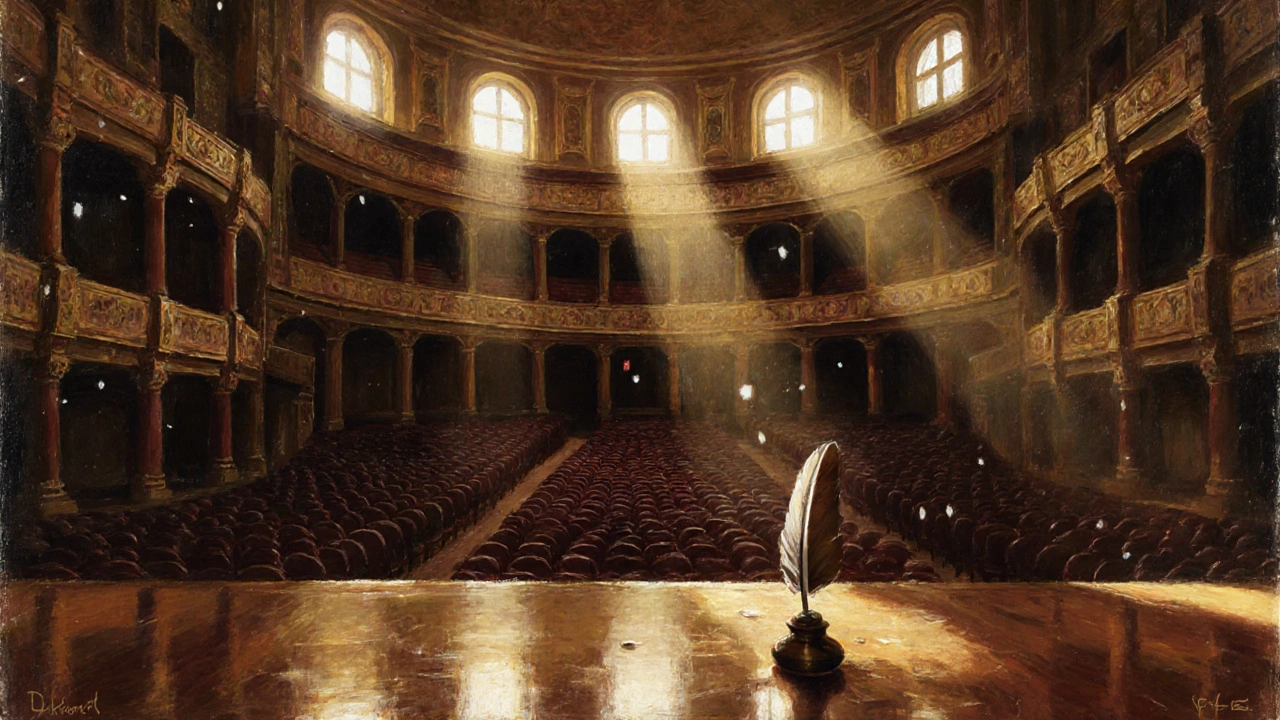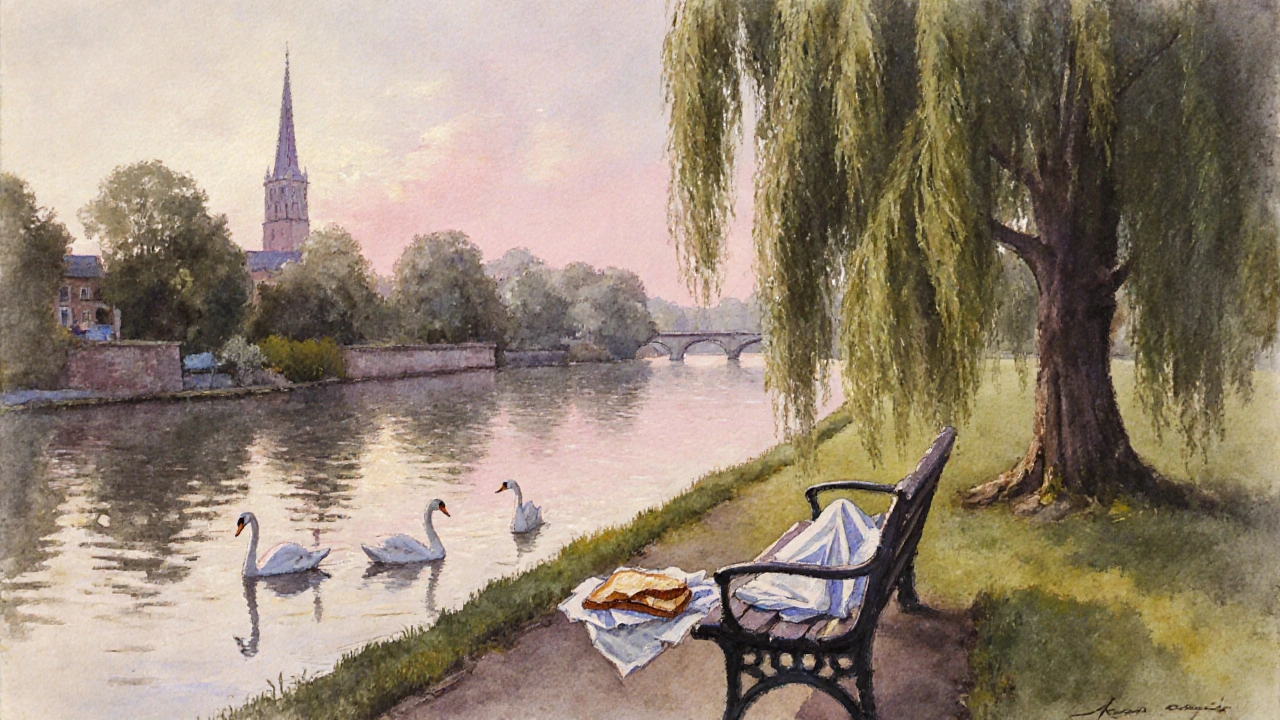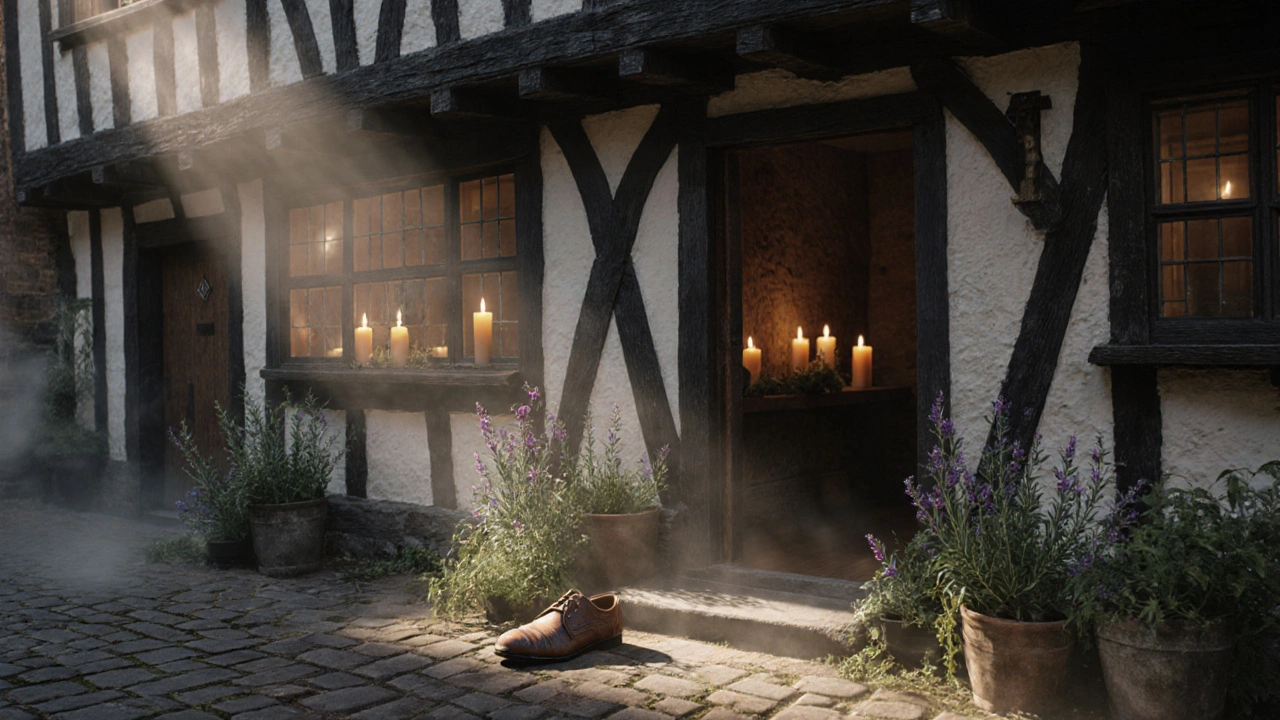It’s 7:30 a.m. in London. You’ve got a train ticket, a packed lunch, and zero plans beyond getting to Stratford-upon-Avon before noon. By 6 p.m., you’ll be back on the platform, tired but smiling, having walked the same streets Shakespeare once did. This isn’t a fantasy-it’s a perfectly doable day trip. And yes, you can see everything that matters without rushing.
Why Stratford-upon-Avon? Because Shakespeare Was Real
People say "Shakespeare" like it’s a brand. But he wasn’t just a name on a textbook cover. He was a boy who grew up in a half-timbered house on Henley Street. He walked past the same stone arches, heard the same church bells, and probably argued with his dad about whether to take the family glove-making business seriously. Stratford-upon-Avon isn’t a theme park. It’s a living town where history didn’t get cleaned up for tourists.
The Royal Shakespeare Company runs theatres here that still stage his plays the way they were meant to be seen-live, loud, and full of emotion. You don’t need to be a literature major to feel it. One woman in the audience last spring told me she cried during Hamlet because her own father had just died. That’s the power of his words, still working 400 years later.
Getting There: The Train Is Your Best Friend
You don’t need a car. In fact, driving into Stratford is a headache. The town center is mostly pedestrian-only, and parking costs £15 an hour. Take the train instead.
Trains leave London Marylebone every hour, starting at 6:15 a.m. The journey takes 1 hour 50 minutes. A standard off-peak return ticket costs £42. Book in advance on Chiltern Railways’ website-you’ll save £10-£15. If you’re flexible, catch the 7:15 a.m. train. You’ll arrive by 9:05 a.m., right when the gates to Shakespeare’s Birthplace open.
Pro tip: Bring a packed sandwich. The cafes near the tourist spots charge £8 for a cheese roll. You can buy a decent one at London’s Marylebone station for £3.50 and save it for lunch under the trees by the Avon River.
What to See: The Five Must-Do Stops
You’ve got about 8 hours. Here’s how to use them without running in circles.
- Shakespeare’s Birthplace (opens 9 a.m.) - This is where he was born in 1564. The house is restored to look like it did in the 1500s, with beeswax candles, wool blankets, and a garden full of herbs he’d have known. Don’t skip the audio guide. It tells you how his father, John Shakespeare, got into debt-and how that shaped his son’s drive to write.
- Anne Hathaway’s Cottage (15-minute walk or 5-minute bus ride) - His wife’s family home. It’s bigger than you think. The thatched roof, the apple orchard, the original bed she slept in-this place feels quieter, more personal. You’ll understand why he wrote so much about love and loss here.
- Holy Trinity Church (next door to the Birthplace) - This is where Shakespeare was baptized, married, and buried. His grave is right in front of the altar. Look closely: the stone slab has a curse carved into it: "Good friend, for Jesus’ sake forbear, / To dig the dust enclosed here. / Blessed be the man that spares these stones, / And cursed be he that moves my bones." He didn’t want his body moved. He knew people would come.
- The Royal Shakespeare Theatre (open for tours at 10 a.m.) - Even if you don’t catch a show, take the 45-minute backstage tour. Walk the stage where Judi Dench and Sir Antony Sher performed. See how they built the thrust stage so the audience wraps around the actors. It’s not a fancy auditorium-it’s a circle of shared breath and silence.
- The Avon River and Bancroft Gardens (afternoon) - Grab a bench, eat your sandwich, and watch the swans glide past. This is where Shakespeare might have sat after a long day. No crowds. No noise. Just the water and the sky.

What to Skip (Yes, Really)
You’ll see signs for "Shakespeare’s Funhouse" and "Shakespeare’s Chocolate Factory." Don’t go. These aren’t bad-they’re just distractions. The real magic isn’t in souvenirs or ice cream shaped like quills. It’s in the silence of the churchyard, the smell of old wood in the Birthplace, the way the light hits the river at 4 p.m.
Also skip the guided bus tours that cram five sites into two hours. You won’t remember anything. You’ll just feel like you’ve been herded.
When to Go: Timing Matters
Spring and autumn are perfect. The trees are in color, the crowds are thinner, and the weather doesn’t feel like a punishment. Summer? It’s packed. Winter? Some sites close early. November is quiet, but the town still hums. You’ll have the church to yourself. The staff at the Birthplace will tell you stories you won’t find online.
Pro tip: Visit on a Tuesday. Most tour groups come on weekends. On weekdays, you’ll get more time with the guides, fewer people in line, and a better chance to ask the librarian at the Shakespeare Centre a real question-like, "Did he really write all of it?" (Spoiler: Yes. And here’s why.)

What to Bring
- Walking shoes (cobblestones are everywhere)
- A light rain jacket (it rains more than you think in Warwickshire)
- Small backpack (for your lunch, water, and a notebook)
- £20 cash (some small shops and the church donation box only take cash)
- Your phone, but leave it in your pocket for an hour. Just walk. Look up.
Why This Trip Stays With You
Most day trips from London are about ticking boxes: Tower Bridge, Madame Tussauds, the London Eye. Stratford is different. It doesn’t shout. It whispers.
At the church, you’ll stand over his grave and realize: he wasn’t some distant genius. He was a man who worried about money, loved his family, got sick, and wrote because he had to. That’s why his words still work. They’re not perfect. They’re human.
When you get back to London that night, you might not say much. But you’ll look at your own life differently. Maybe you’ll open a book you’ve been ignoring. Maybe you’ll write something. Maybe you’ll just sit quietly and listen to the rain.
That’s the gift of Stratford-upon-Avon. It doesn’t give you a souvenir. It gives you a question: What will you leave behind?
Can I do Stratford-upon-Avon as a day trip from London?
Yes, absolutely. Trains from London Marylebone take just under 2 hours each way. You can easily spend 7-8 hours in Stratford, covering all the key sites, and be back in London by 7 p.m. It’s one of the most rewarding day trips you can take.
How much does a day trip to Stratford-upon-Avon cost?
Plan for £60-£80 per person. That includes a return train ticket (£42), entry to Shakespeare’s Birthplace (£20), and a few extras like a coffee or snack. You can cut costs by bringing your own lunch and skipping optional attractions like Anne Hathaway’s Cottage (£16), which is beautiful but not essential.
Is Stratford-upon-Avon worth visiting if I’m not into Shakespeare?
Yes. Even if you’ve never read a play, the town itself is charming. The river, the old buildings, the quiet streets, and the friendly locals make it feel like stepping into a postcard. The Royal Shakespeare Theatre’s architecture and history are impressive on their own. It’s a peaceful escape from London’s noise.
Are there guided tours in Stratford-upon-Avon?
Yes, but be picky. The free walking tours (run by volunteers) are excellent and last about 90 minutes. Avoid the big bus tours that rush you from site to site. If you want depth, book a private guide through the Shakespeare Birthplace Trust-they know the hidden stories, like where Shakespeare’s schoolmaster lived or how the town’s layout shaped his plays.
Can I visit Shakespeare’s grave for free?
You can see Shakespeare’s grave from inside Holy Trinity Church, but you need to pay the £5 donation to enter the church. It’s not mandatory, but it helps maintain the building. The church is open daily from 8 a.m. to 6 p.m., and you can usually walk in without waiting.
Next Steps: What to Do After Your Trip
Once you’re back in London, don’t let the feeling fade. Visit the Globe Theatre on the South Bank. Watch a play-preferably one you’ve never seen before. Pick up a copy of As You Like It from a secondhand bookshop. Or just sit by the Thames and read a sonnet aloud. Shakespeare didn’t write for scholars. He wrote for people who felt something.
Stratford-upon-Avon isn’t a museum. It’s a mirror. And what you see there depends on what you’re ready to feel.
